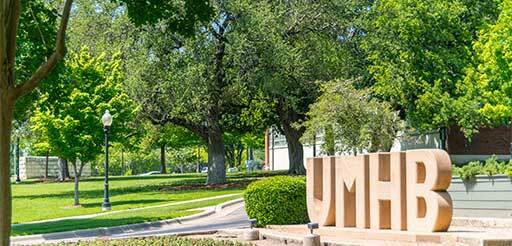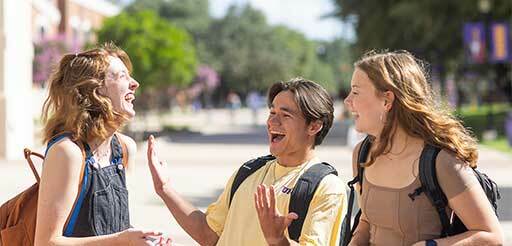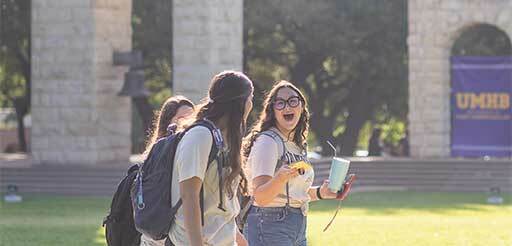Curriculum
Entry Level Courses
Introduction to Health Sciences (EXSS 2335), Freshman Seminar (UMHB 1101), Lifespan Nutrition (EXSS 2353), Human Anatomy & Physiology I (BIOL 2340), Human Anatomy & Physiology I Lab BIOL 2140, Human Anatomy & Physiology II (BIOL 2341) Human Anatomy & Physiology II Lab (BIOL 2141), Human Anatomy (EXSS 2345), and Advanced Resistance Training (EXSS 3135) are the building blocks of the initial curriculum that progresses horizontally into the application of skills, knowledge, and abilities. These courses are centered around basic science and skill development.
Foundation Level Courses
Performance Nutrition (EXSS 3354), Anatomical Kinesiology (EXSS 3390), and Advanced Olympic Techniques (EXSS 4198) build upon previous courses and require a more advanced understanding and application of knowledge and skills. Exercise Psychology (EXSS 3378), Physiology of Exercise (EXSS 3395) , Physiology of Exercise II (EXSS 3396), Advanced Cardiovascular Training (EXSS 3107), Principles of Strength and Conditioning (EXSS 4350), and Tests and Measurements in EXSS (EXSS 4392) are foundational courses in psychology, exercise science, and strength and conditioning. These courses are the building blocks of knowledge and understanding that lead to more advanced course work.
Advanced Level Courses
Ergogenic Aids in Sport (EXSS 4315), Exercise Testing and Prescription (EXSS 4394), Sport Psychology (EXSS 3379), Program Design in Strength & Conditioning (EXSS 4319), Biomechanics of Human Movement (EXSS 4335), Rehabilitation and Therapeutic Exercise (EXSS 4351) are advanced courses that culminate with the evaluation and creation of strength and conditioning program design and implementation, athlete safety, and program & athlete assessment. Leadership in Health Science (EXSS 4344) and CSCS Seminar (EXSS 4185) focus on professionalism, leadership, job placement (applying & interviewing), graduate school application, exam preparation (CSCS practice exam), and final portfolio. Internship in Strength & Conditioning (EXSS 4370) is the capstone and final experience for the student. Internship is the course associated with the field experience.
Freshman Year
EXSS 2335 |
Introduction to Health Sciences |
UMHB 1101 |
Freshman Seminar |
EXSS 2353 |
Lifespan Nutrition |
Sophomore Year
BIOL 2340 |
Human Anatomy & Physiology I |
BIOL 2140 |
Human Anatomy & Physiology I Lab |
BIOL 2341 |
Human Anatomy & Physiology II |
BIOL 2141 |
Human Anatomy & Physiology II Lab |
EXSS 2345 |
Human Anatomy |
EXSS 3135 |
Advanced Resistance Training |
Junior Year
EXSS 3354 |
Performance Nutrition |
EXSS 3378 |
Exercise Psychology |
EXSS 3390 |
Anatomical Kinesiology |
EXSS 3395 |
Physiology of Exercise |
EXSS 3396 |
Physiology of Exercise II |
EXSS 3107 |
Advanced Cardiovascular Training |
EXSS 4350 |
Principles of Strength and Conditioning |
EXSS 4198 |
Advanced Olympic Techniques |
EXSS 4392 |
Tests and Measurements in EXSS |
Senior Year
EXSS 4315 |
Ergogenic Aids in Sport |
EXSS 4394 |
Exercise Testing and Prescription |
EXSS 3379 |
Sport Psychology |
EXSS 4319 |
Program Design in Strength & Conditioning |
EXSS 4344 |
Leadership in Health Science |
EXSS 4335 |
Biomechanics of Human Movement |
EXSS 4351 |
Rehabilitation and Therapeutic Exercise |
EXSS 4370 |
Internship in Strength & Conditioning |
EXSS 4185 |
CSCS Seminar |
Field Experience
The field experience must provide a minimum of 300 hours of contact time including:
a. A minimum of two substantially different experiences that include two or more of the following categories: sport, gender, age range, or other.
b. Two different supervisors (does not require experiences at two different sites).
c. Minimum of 75 hours per experience.
d. One experience must be at least 6 weeks in length.
e. Specifically, the field experience must minimally include the following key areas: warm-up, flexibility training, exercise technique, spotting, Olympic- style lifting, progressions/regressions, test selection and administration, program design, speed/agility/plyometric training, anaerobic and aerobic program design, and periodization.
Page last updated September 23, 2021



